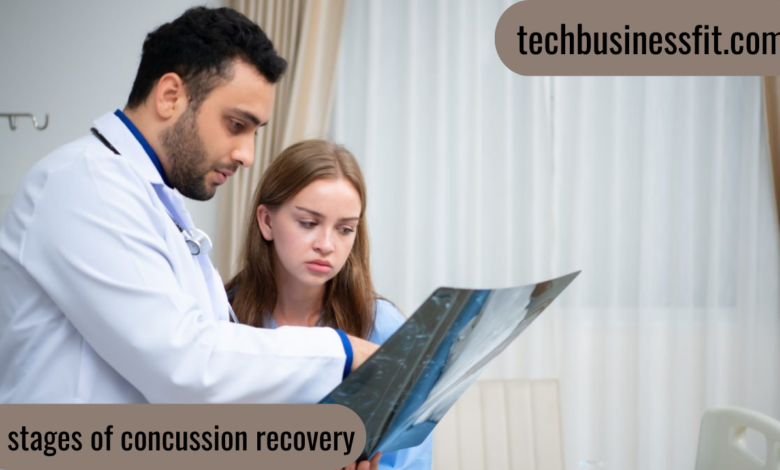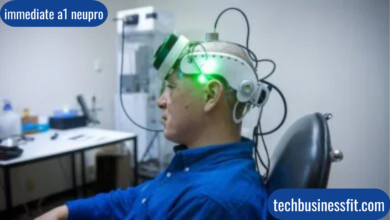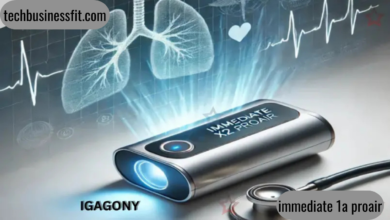6 Stages of Concussion Recovery: Understanding the Healing Process

Concussions are a type of mild traumatic brain injury (TBI) that can occur due to direct or indirect blows to the head. Recovery from a concussion is not instantaneous; instead, it follows a structured process divided into 6 stages of concussion recovery. Understanding these stages can help individuals, caregivers, and medical professionals navigate the healing journey effectively.
Stage 1: Immediate Rest and Symptom Monitoring
The first stage begins immediately after the concussion. This is a critical period where complete physical and cognitive rest is necessary. Symptoms such as headaches, dizziness, nausea, sensitivity to light and noise, and confusion are common. During this time:
- Avoid screen time, reading, and strenuous activities.
- Limit exposure to bright lights and loud environments.
- Get plenty of sleep and stay hydrated.
- Monitor symptoms closely and seek medical attention if they worsen.
This stage typically lasts for 24-48 hours, but its duration can vary based on individual recovery speed.
Stage 2: Light Cognitive and Physical Activity
Once initial symptoms begin to subside, the patient can gradually reintroduce light activities. However, it is essential to avoid activities that may trigger or worsen symptoms. Some recommendations for this stage include:
- Engaging in light physical activity like short walks.
- Performing mild cognitive tasks such as listening to audiobooks or engaging in light conversations.
- Avoiding activities that require intense concentration, such as reading, gaming, or working long hours.
If symptoms increase, rest should be resumed before progressing further. This stage typically lasts for a few days.
Stage 3: Moderate Activity with Increased Cognitive Load
At this stage, the individual may gradually increase cognitive and physical activities. The goal is to test tolerance to more demanding tasks while still monitoring symptoms. Key aspects include:
- Returning to light work or school activities but with modified schedules.
- Engaging in low-impact physical exercises like stretching and yoga.
- Introducing limited screen time with frequent breaks.
This phase typically lasts around a week, but symptoms should dictate progress. If any symptoms return or worsen, stepping back to the previous stage is recommended.
Stage 4: Returning to Regular Activities with Caution
By this stage, most individuals experience significant symptom relief and can return to more regular daily activities with some restrictions. Some guidelines include:
- Gradually increasing time spent at school or work.
- Engaging in moderate exercise but avoiding contact sports or intense workouts.
- Continuing symptom monitoring and adjusting activities accordingly.
This stage marks a significant step in the healing process and can last for several days to weeks, depending on the individual’s recovery rate.
Stage 5: Non-Contact Sports and Full Cognitive Engagement
This stage allows for full participation in non-contact physical activities and complete cognitive workloads. Recommendations include:
- Resuming normal work or school schedules without accommodations.
- Engaging in non-contact sports and moderate-to-high-intensity exercises.
- Performing complex cognitive tasks, such as multitasking and problem-solving.
However, athletes should still avoid full-contact sports or high-risk activities. If symptoms persist, it may indicate the need for additional recovery time.
Stage 6: Full Return to Normal Activities and Sports
In the final stage, individuals can fully resume all normal activities, including physical sports and high-intensity workouts. This stage should only be entered if:
- There are no remaining symptoms at rest or during activities.
- The person has been cleared by a healthcare professional.
- Physical endurance and cognitive function have fully returned to pre-concussion levels.
Returning too soon can increase the risk of another concussion or prolonged recovery, so patience is key.
FAQs on the 6 Stages of Concussion Recovery
1. How long does it take to recover from a concussion?
The recovery period varies for each individual. While some recover within a few weeks, others may take months, depending on the severity of the concussion and adherence to proper recovery steps.
2. Can I speed up my concussion recovery?
While there is no way to drastically speed up recovery, following the recommended 6 stages of concussion recovery, resting adequately, staying hydrated, and avoiding re-injury can support the healing process.
3. Is it normal to have lingering symptoms after a concussion?
Yes, some individuals experience post-concussion syndrome, where symptoms persist for weeks or months. If symptoms continue beyond the expected recovery period, consult a healthcare provider.
4. Can I use screens or read during recovery?
During the early stages, screen time and reading should be limited as they can worsen symptoms. Gradually reintroduce these activities as tolerated.
5. When should I seek medical attention after a concussion?
Seek immediate medical care if symptoms worsen, new symptoms arise, or there is loss of consciousness, repeated vomiting, or severe confusion.
Conclusion
The 6 stages of concussion recovery provide a structured approach to healing and ensure that individuals do not rush back into normal activities prematurely. Each stage plays a vital role in full neurological recovery, and patience is crucial. Always consult a medical professional before resuming intense activities to avoid long-term complications.




